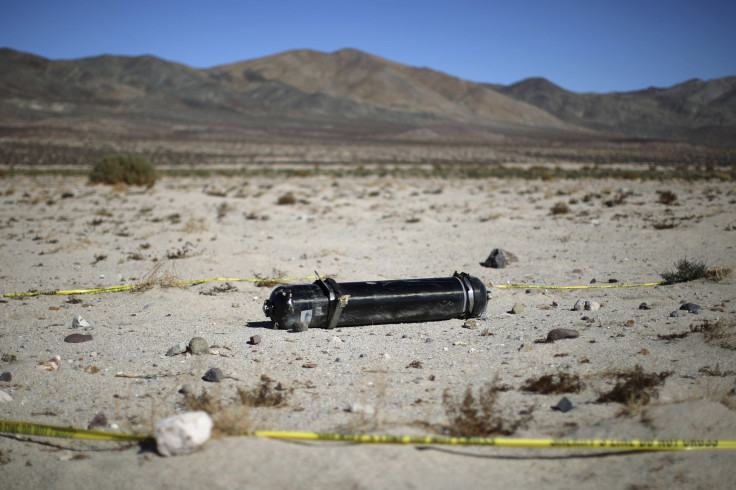Virgin Galactic Crash: NTSB Says SpaceShipTwo’s Tail Deployed Prematurely Without Proper Command

Investigators have found that Virgin Galactic’s SpaceShipTwo, which crashed in Southern California’s Mojave Desert during a test flight on Friday, broke apart in mid-air after the craft’s tail, which is used to slow descent, lifted prematurely. The crash killed test pilot Michael Alsbury and injured co-pilot Peter Siebold.
According to Christopher Hart, chairman of the National Transportation Safety Board, or NTSB, the exact cause of the fatal crash is yet to be determined, but the craft’s “feathering” system was found to be unlocked about nine minutes after ignition, before the vehicle reached the desired speed. The system was supposed to be unlocked at Mach 1.4, lifting the craft’s tail to slow its descent, but the unlocking occurred at Mach 1.0, which is the speed of sound.
Hart said that the “feathering” system requires a two-step process to deploy. While the co-pilot unlocked the system, the second step to complete the process occurred “without being commanded,” the Associated Press reported, adding that SpaceShipTwo’s fuel tanks and engines had shown no signs of being breached.
Hart also added that a premature unlocking of the “feathering” system was not necessarily the cause of the crash. According to him, the investigation will continue Monday while a final analysis could take as long as a year to complete.
Here are some tweets from NTSB, summarizing the initial findings of the investigation:
Hart: Approximately 9 seconds after ignition, the "feather" parameters changed from lock to unlock. #SpaceShipTwo
— NTSB (@NTSB) November 3, 2014Hart: Approximately 2 seconds later, just above Mach 1.0, feathers moved toward the extended position....#SpaceShipTwo
— NTSB (@NTSB) November 3, 2014...even though the “feather” handle was not moved, after which the telemetry data terminated. #SpaceShipTwo
— NTSB (@NTSB) November 3, 2014Hart: Normal procedures are to unlock feathers after Mach 1.4 so aerodynamic forces do not extend feathers prematurely. #SpaceShipTwo
— NTSB (@NTSB) November 3, 2014Here is a video of the media briefing on Sunday night:
Also on Sunday, Virgin Galactic announced that the company was working on a second spacecraft, which could be ready to fly by next year.
“The second spaceship is getting close to readiness,” George Whitesides, CEO of Virgin Galactic, told the Financial Times, adding that the new spaceship, which has been under construction for the last three years in New Mexico, is “65 per cent complete” and will be ready to take to the skies after the cause of Friday’s accident is determined.
On Saturday, Richard Branson, the founder of Virgin Galactic, said in a blog post that he was “shocked and saddened” by the accident, but insisted that he would “persevere” with his mission to commercialize space travel.
Virgin Galactic had reportedly planned to launch commercial space tourism flights with SpaceShipTwo by 2015. But, according to experts, Friday’s accident could mean a three- to five-year delay for the company’s plans.
© Copyright IBTimes 2025. All rights reserved.





















